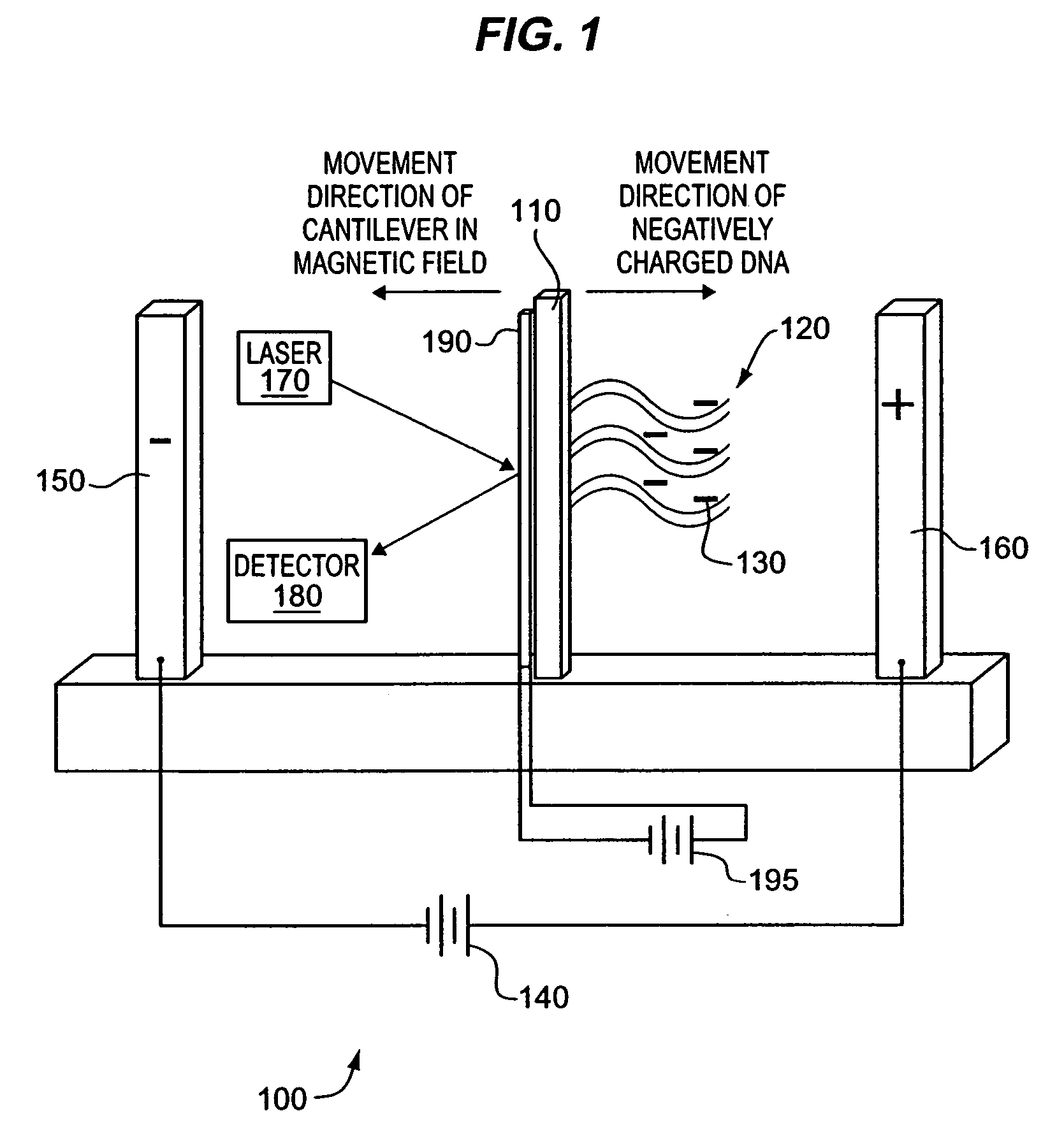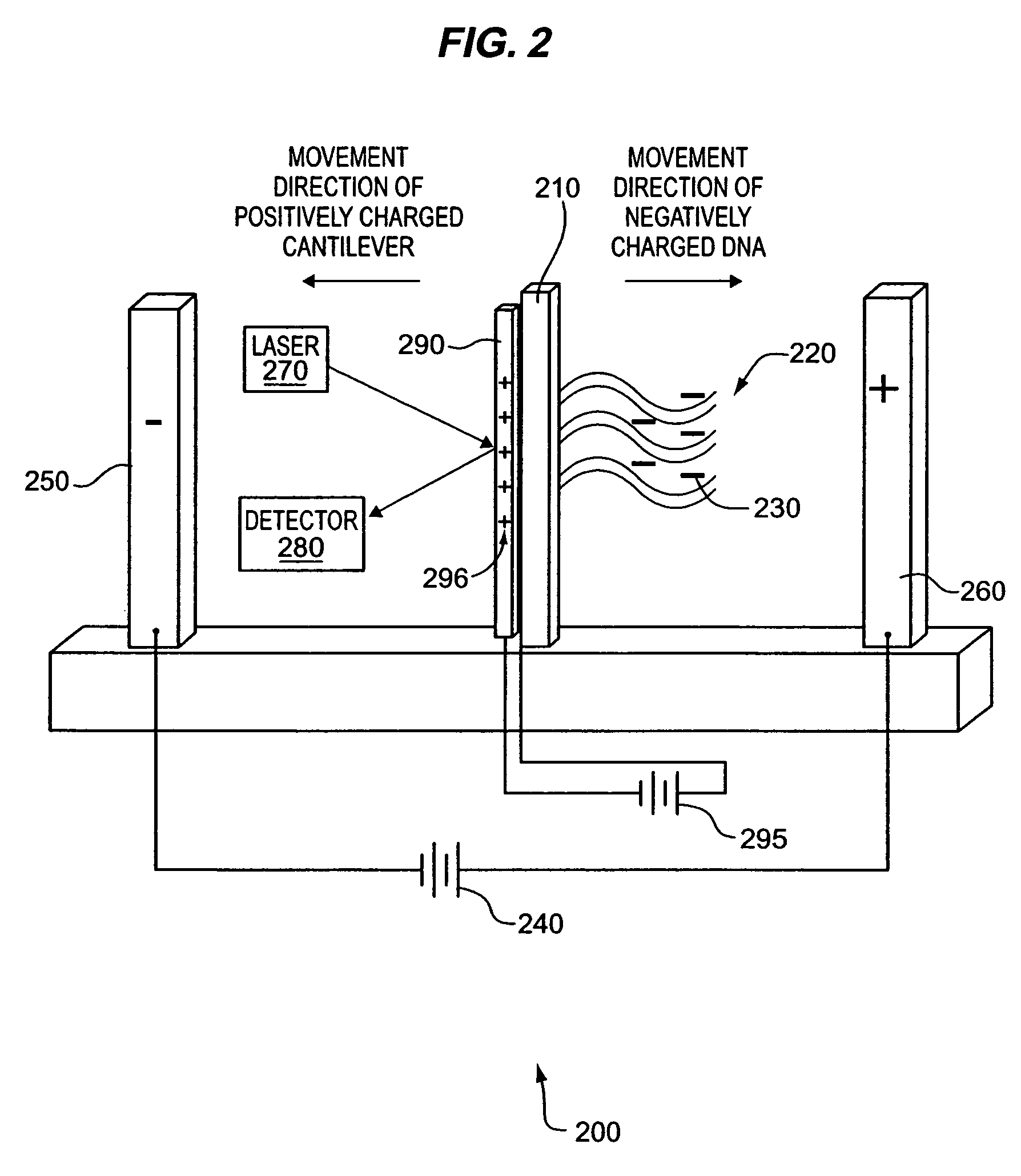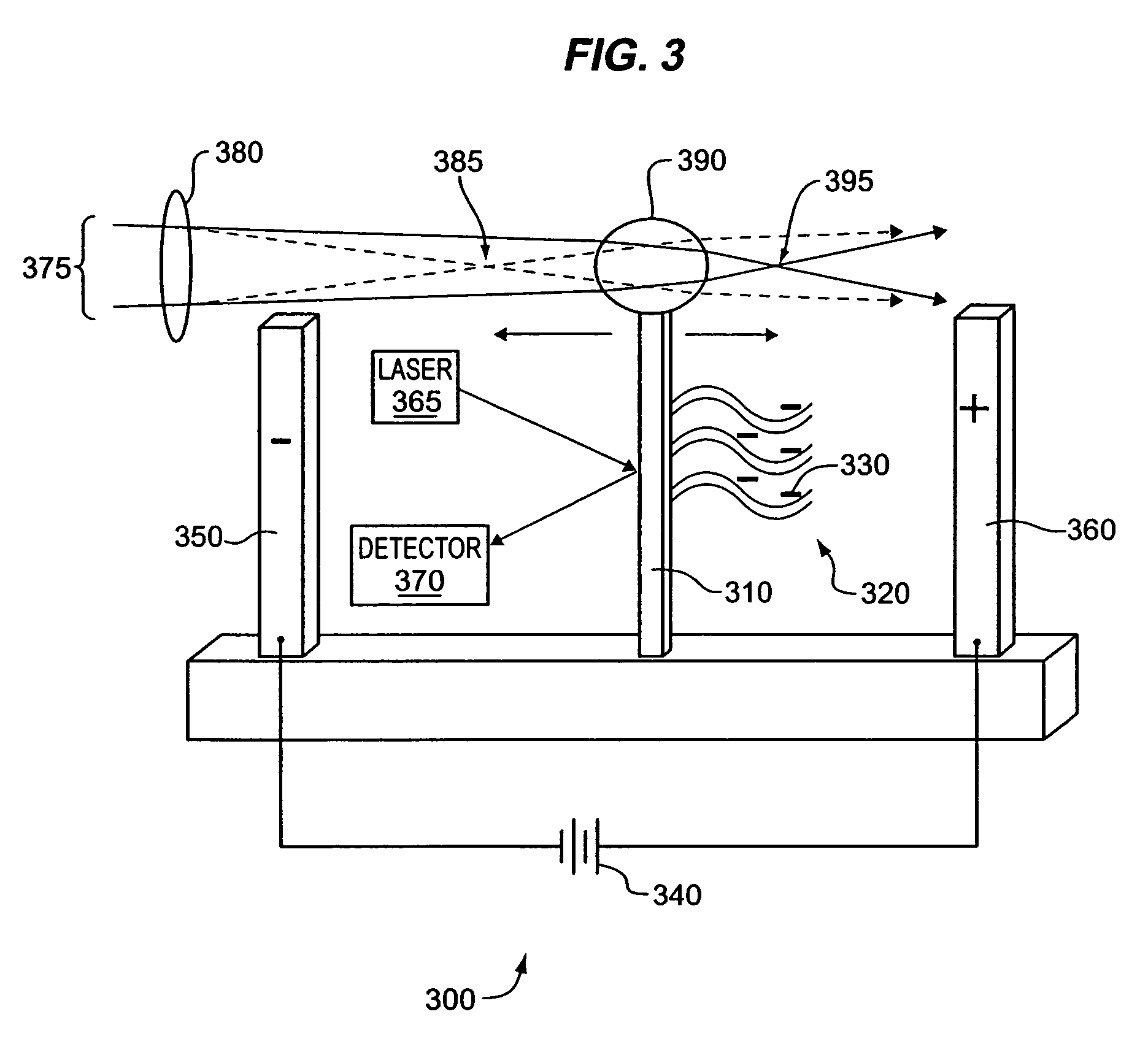Detecting molecular binding by monitoring feedback controlled cantilever deflections
a technology of cantilever deflection and molecular binding, which is applied in the field of analyte detection and/or identification, can solve the problems of low sensitivity of the assay, unacceptably high false positive or false negative levels of antibody based assays, and the inability to detect molecular binding,
- Summary
- Abstract
- Description
- Claims
- Application Information
AI Technical Summary
Benefits of technology
Problems solved by technology
Method used
Image
Examples
example 1
Charge-Magnet Balanced Cantilever
[0096]FIG. 1 illustrates an exemplary apparatus 100 and method for analyte 130 detection and / or identification. The apparatus 100 comprises one or more cantilevers 110 attached to one or more probe molecules 120. The probe molecules 120 bind to electrically charged target analytes 130. An electrical potential gradient is imposed by a direct current power supply 140 attached to a pair of electrodes 150, 160 flanking the cantilever 110. Upon binding of a charged target analyte 130, the cantilever 110 will be deflected towards one electrode 150 or the other 160. In certain embodiments of the invention, the electrodes 150, 160 may be used to initially control movement of analytes 130 toward the probe molecules 120. After analytes 130 have bound to the probes 120, unbound analytes 130 may be moved away from the. cantilever 110 (e.g., by washing the unbound analytes away using an appropriate buffer). Once probes 120 have bound to analytes 130, the electrod...
example 2
Charge-Balanced Cantilever
[0101]FIG. 2 illustrates an alternative exemplary apparatus 200 and method for analyte 230 detection and / or identification. The apparatus 200 comprises a cantilever 210 attached to one or more probe molecules 220 that can bind to charged or neutral analytes 230. Binding of charged analytes 230 results in deflection of the cantilever 210 in response to an electrical potential gradient imposed by a first power supply 240 attached to a pair of electrodes 250, 260. Binding of neutral analytes 230 may cause cantilever 210 deflection due to a change in surface tension. Cantilever 210 deflection may be detected by a detection unit comprising a laser 270 and position sensitive photodetector 280.
[0102]In the exemplary embodiment of the invention illustrated in FIG. 2, the counterbalancing force is provided by an inducible charge storage layer 290 attached to or incorporated in the cantilever 210. The charge storage layer 290 comprising, for example, a thin layer of ...
example 3
Cantilever Balanced by Radiation Pressure
[0103]The use of electromagnetic (e.g., light) radiation to apply a force to various objects is known, for example in the construction and use of optical tweezers (e.g., Walker et al., FEBS Lett. 459:39-42, 1999; Bennink et al., Cytometry 36:200-208, 1999; Mehta et aL., Science 283:1689-95, 1999; Smith et al., Am. J. Phys. 67:26-35, 1999). FIG. 3 illustrates another exemplary apparatus 300 and method for analyte 330 detection and / or identification.
[0104]Alternative geometries are available to provide a radiation pressure counterbalancing force. In embodiments of the invention exemplified in FIG. 3, a transparent object with a curved surface (e.g., a bead 390) and a refractive index that differs from the surrounding medium may be attached to any part of a cantilever 310. A focused light beam 375 can create a force on the transparent object 390 to generate a counterbalancing force. In alternative embodiments of the invention, a light beam 375 m...
PUM
| Property | Measurement | Unit |
|---|---|---|
| thick | aaaaa | aaaaa |
| thick | aaaaa | aaaaa |
| thickness | aaaaa | aaaaa |
Abstract
Description
Claims
Application Information
 Login to View More
Login to View More - R&D
- Intellectual Property
- Life Sciences
- Materials
- Tech Scout
- Unparalleled Data Quality
- Higher Quality Content
- 60% Fewer Hallucinations
Browse by: Latest US Patents, China's latest patents, Technical Efficacy Thesaurus, Application Domain, Technology Topic, Popular Technical Reports.
© 2025 PatSnap. All rights reserved.Legal|Privacy policy|Modern Slavery Act Transparency Statement|Sitemap|About US| Contact US: help@patsnap.com



